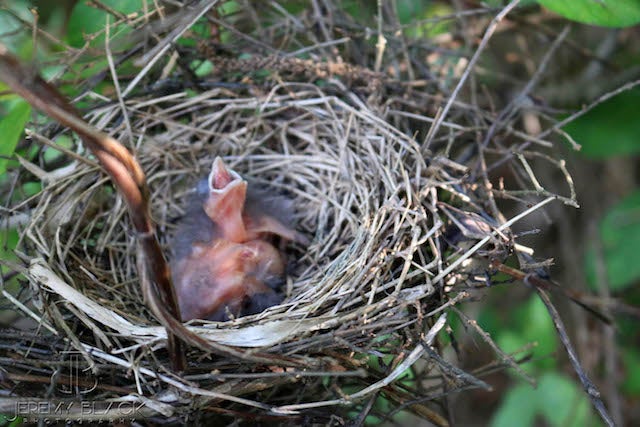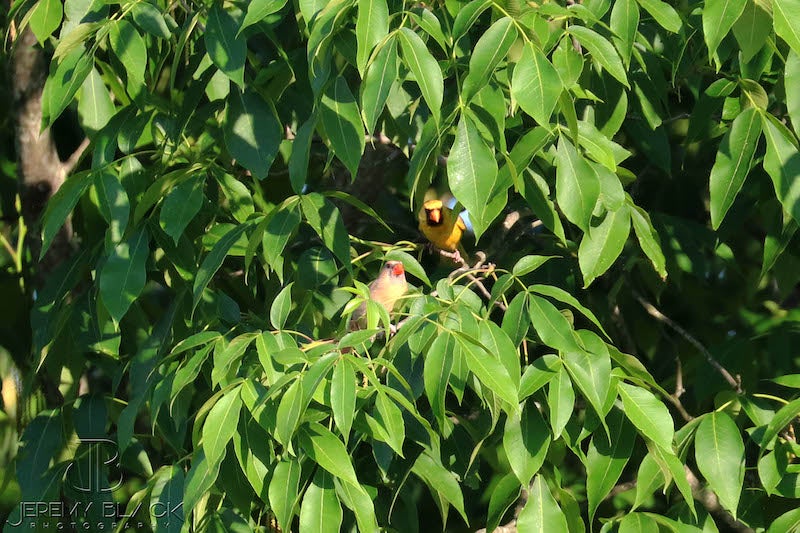Alabaster yellow cardinal fathers two babies
Published 12:31 pm Monday, June 4, 2018
ALABASTER – Two Alabaster residents who have been following the January sighting of a rare yellow North American cardinal, who has been affectionately dubbed “Mr. Yellow,” confirmed that he has become the father of two babies as of Thursday, May 31.
Local photographer Jeremy Black, who has been observing Mr. Yellow with local birder Charlie Stephenson, said they found his babies on Thursday. According to Stephenson’s research, the babies were born on May 30.
Since Mr. Yellow was first spotted, Stephenson said she and Black have been on the lookout for a nest. They also observed Mr. Yellow frequently hanging around an adult female cardinal who, despite having the normal coloring of brown feathers with red tips, has been referred to as “Mrs. Yellow.”
Because cardinals typically produce two broods, one as early as March and one in early summer, Stephenson said it is possible that Mr. Yellow could have had more babies.
“We’re on the cusp,” Stephenson said. “We don’t know if this is the first brood, or if we missed the one in March or April.”
Because they’re so young and their adult feathers have not grown in, Black said they are currently unable to tell if one of them will also be yellow.
“We’re trying to figure out how we can determine their plumage and their gender,” Black said.
Currently, Black said the babies have small, brown feathers that will be shed to allow the adult plumage to grow in. It will be between one to three months, Black said, until that happens.
“Whenever they decide that they’re going to molt, they’ll lose all that brown and they’ll come back with red, or brown with red tips or yellow,” Black said.
So far, Black said they are unsure of the likelihood that one of the babies will inherit their father’s unusual coloring. Black said he and Stephenson are likely the only people to observe a yellow cardinal that has reproduced.
“We’re kind of the first people who have gotten to sit down and study its behavior,” Black said. “I haven’t seen any other reports about another yellow cardinal reproducing.”
According to Stephenson, the chances that one of the babies will also be yellow are slim.
“This is supposed to be a mutation. It’s so rare and that’s why yellow cardinals are only seen once a year,” Stephenson said. “It’s not like it’s going to be passed down the line. It doesn’t work that way.”
After Mr. Yellow was first seen, Black and Stephenson spoke to the members of the Audobon Society and the Cornell Lab of Orthinology, who expressed concerns that he wouldn’t be able to function in the wild like a normal cardinal.
“With his condition, we’ve been told there are so many things he wouldn’t be able to do,” Stephenson said.
“He’s consistently defying the odds, and is a regular cardinal who just happens to be yellow,” Black said. “And this year, he gets to celebrate his first Father’s Day.”
While they are not disclosing the exact location of Mr. Yellow’s nest, Black said Mr. Yellow built it close to Stephenson’s residence, where he was first spotted. Black and Stephenson check up on Mr. Yellow and his family once every three or four days to make sure they are healthy and safe.
“We’re trying to make sure they’re safe and that people aren’t disturbing the nest,” Black said.
Black said he has appreciated the support of Mr. Yellow’s numerous fans who have been following his progress in Alabaster through “The Yellow Cardinal” Facebook page.
“Since we started ‘The Yellow Cardinal’ page, people actually feel like they’re a part of the experience,” Black said. “They’re all thrilled and staying up to date.”
Stephenson said that fans of Mr. Yellow will receive updates as the babies grow and if Mr. Yellow has any more broods in this three-year lifespan. She said the babies could begin leaving the nest as early as Wednesday, June 6.
“We’re concentrating on watching the babies, and trying to take video of when they fledge,” Stephenson said.
On June 1, Black said he and Stephenson were concerned about the threat of incoming storms damaging the nest or hurting the babies. On June 4, Stephenson and Black confirmed that the babies, their mother and Mr. Yellow remained healthy and unharmed.











